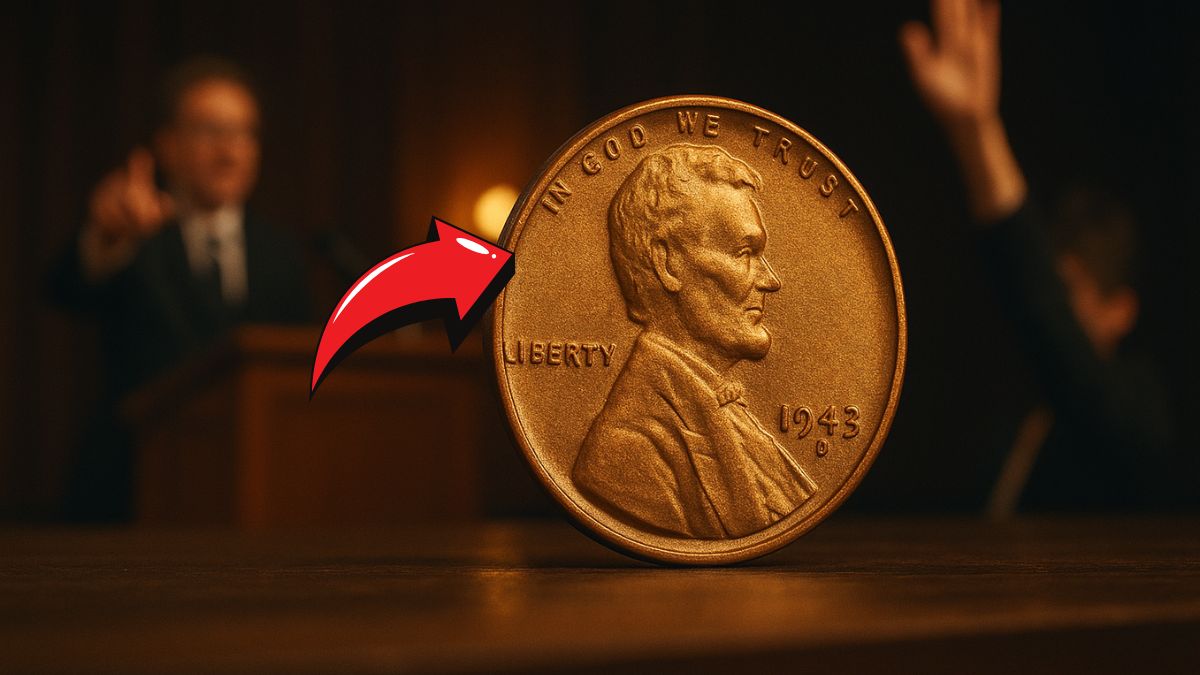In the realm of numismatics, few coins captivate collectors and investors like the 1943 Bronze Lincoln Wheat Penny.
With its unique history and extreme rarity, this coin has become a legend, appearing at auctions only once every decade.
Its scarcity and the stories surrounding it have solidified its status as one of the most sought-after coins in American history.
The Origin of the 1943 Bronze Lincoln Wheat Penny
During World War II, the U.S. Mint faced a copper shortage due to the metal’s necessity in ammunition production. To conserve copper, the Mint transitioned to producing pennies from zinc-coated steel in 1943.
However, a few bronze planchets (coin blanks) from 1942 were mistakenly left in the coin presses, resulting in a limited number of 1943 Bronze Lincoln Wheat Pennies.
These bronze pennies were not meant to exist, making them minting errors. Their accidental creation and the subsequent efforts to retrieve them have only added to their mystique and value.
Rarity and Auction Appearances
Estimates suggest that only 10 to 15 of these bronze pennies exist today.
Their extreme rarity means they seldom appear at auctions, typically surfacing only once every ten years.
When they do, they ignite bidding wars among collectors eager to own a piece of numismatic history.
Notable Auction Sales
The 1943 Bronze Lincoln Wheat Penny has fetched impressive sums at auctions:
- In 2010, a 1943-D bronze cent sold for $1.7 million, setting a record for the highest price paid for a Lincoln cent.
- A 1943-S bronze cent was sold to a private collector for $1 million, highlighting the coin’s immense value.
These sales underscore the coin’s status as a numismatic treasure and its appeal to high-end collectors.
Key Features and Identification
Identifying a genuine 1943 Bronze Lincoln Wheat Penny involves several key features:
- Date and Mint Mark: The coin should bear the date 1943 and may have a mint mark indicating its origin (D for Denver, S for San Francisco, or no mark for Philadelphia).
- Color and Composition: Unlike the grayish steel pennies of 1943, the bronze version has a distinct reddish-brown hue.
- Magnetic Test: Steel pennies are magnetic, while bronze pennies are not. A simple magnet test can help determine the coin’s composition.
- Weight: Bronze pennies weigh approximately 3.11 grams, compared to the 2.7 grams of steel pennies.
Due to the prevalence of counterfeits, it’s crucial to have the coin authenticated by reputable grading services like PCGS or NGC.
Comparison with Other Valuable Lincoln Pennies
While the 1943 Bronze Lincoln Wheat Penny is the most renowned, other Lincoln pennies have also achieved significant auction prices:
| Year | Description | Auction Record |
|---|---|---|
| 1909-S VDB | First year of issue with designer’s initials; low mintage | Over $360,000 |
| 1955 Doubled Die | Notable doubling error on obverse | Up to $114,000 |
| 1944 Steel Cent | Minted on leftover steel planchets post-1943 | Approximately $180,000 |
These coins, like the 1943 bronze cent, owe their value to minting errors, low mintage, and historical significance.
Collecting and Investing in Rare Pennies
For collectors and investors, acquiring a 1943 Bronze Lincoln Wheat Penny is akin to owning a rare piece of art. Its value has consistently appreciated over time, making it not only a collector’s dream but also a sound investment.
However, due to its rarity and the presence of counterfeits, potential buyers should:
- Seek Authentication: Always purchase coins that have been authenticated and graded by reputable services.
- Consult Experts: Engage with numismatic experts or dealers when considering high-value purchases.
- Stay Informed: Keep abreast of auction results and market trends to make informed decisions.
The 1943 Bronze Lincoln Wheat Penny stands as a testament to the allure of rare coins. Its accidental creation, extreme rarity, and the fervor it incites at auctions every decade make it a crown jewel in the world of coin collecting. For those fortunate enough to own one, it’s not just a coin—it’s a piece of history.
FAQs
How can I tell if I have a 1943 Bronze Lincoln Wheat Penny?
Check the coin’s date and mint mark. A genuine 1943 bronze penny will have a reddish-brown hue, weigh about 3.11 grams, and will not be magnetic. Due to the prevalence of counterfeits, it’s essential to have the coin authenticated by a reputable grading service.
Why were some 1943 pennies made of bronze instead of steel?
The U.S. Mint switched to steel pennies in 1943 to conserve copper for the war effort. However, a few bronze planchets from 1942 were mistakenly left in the coin presses, resulting in the accidental creation of bronze pennies in 1943.
How much is a 1943 Bronze Lincoln Wheat Penny worth today?
The value varies based on the coin’s condition and provenance. Notably, a 1943-D bronze cent sold for $1.7 million in 2010, while a 1943-S bronze cent fetched $1 million. These figures highlight the coin’s immense value among collectors.

